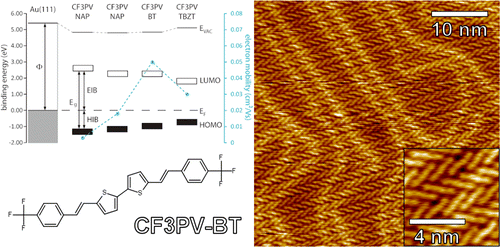| Mike's Pages |
Links |
Band Gap Tunable N-Type Molecules for Organic Field Effect Transistors
H. Glowatzki, P. Sonar, S. P. Singh, A. M. Mak, M. B. Sullivan, W. Chen, A. T. S. Wee, and A. Dodabalapur
National University of Singapore, Department of Physics, 2 Science Drive 3, 117542, Singapore
Agency for Science, Technology, and Research, Institute of Materials Research and Engineering, 3 Research Link Singapore 117602, Singapore
University of Texas at Austin, Microelectronics Research Center, Austin, Texas 78758, United States
Shiv Nadar University, Greater Noida, India
Agency for Science, Technology, and Research, Institute of High Performance Computing, 1 Fusionopolis Way, #16-16 Connexis, Singapore 138632, Singapore
Publication Date (Web): April 26, 2013
J. Phys. Chem. C 2013, 117, 11656-11662.

ABSTRACT:
A series of four novel n-type molecules has been synthesized. Unlike previous approaches, the end group of these molecules was fixed and the molecular core was varied. The resulting materials were thoroughly analyzed. Electronic properties were derived from photoemission spectroscopy, optical properties were derived with the help of optical spectroscopy, and the structure of thin films on Au(111) was derived by scanning tunneling microscopy (STM). In addition, prototypical organic field-effect transistors (OFETs) (forming n-channels in OFETs) have been fabricated and tested. The correlation between the device performance of the respective OFETs (i.e., electron mobility) and their electronic as well as structural properties was investigated. It turned out that a combination of beneficial electronic and structural properties provides the best results. These findings are important for the design of new materials for future device applications.
DOI: 10.1021/jp311092s